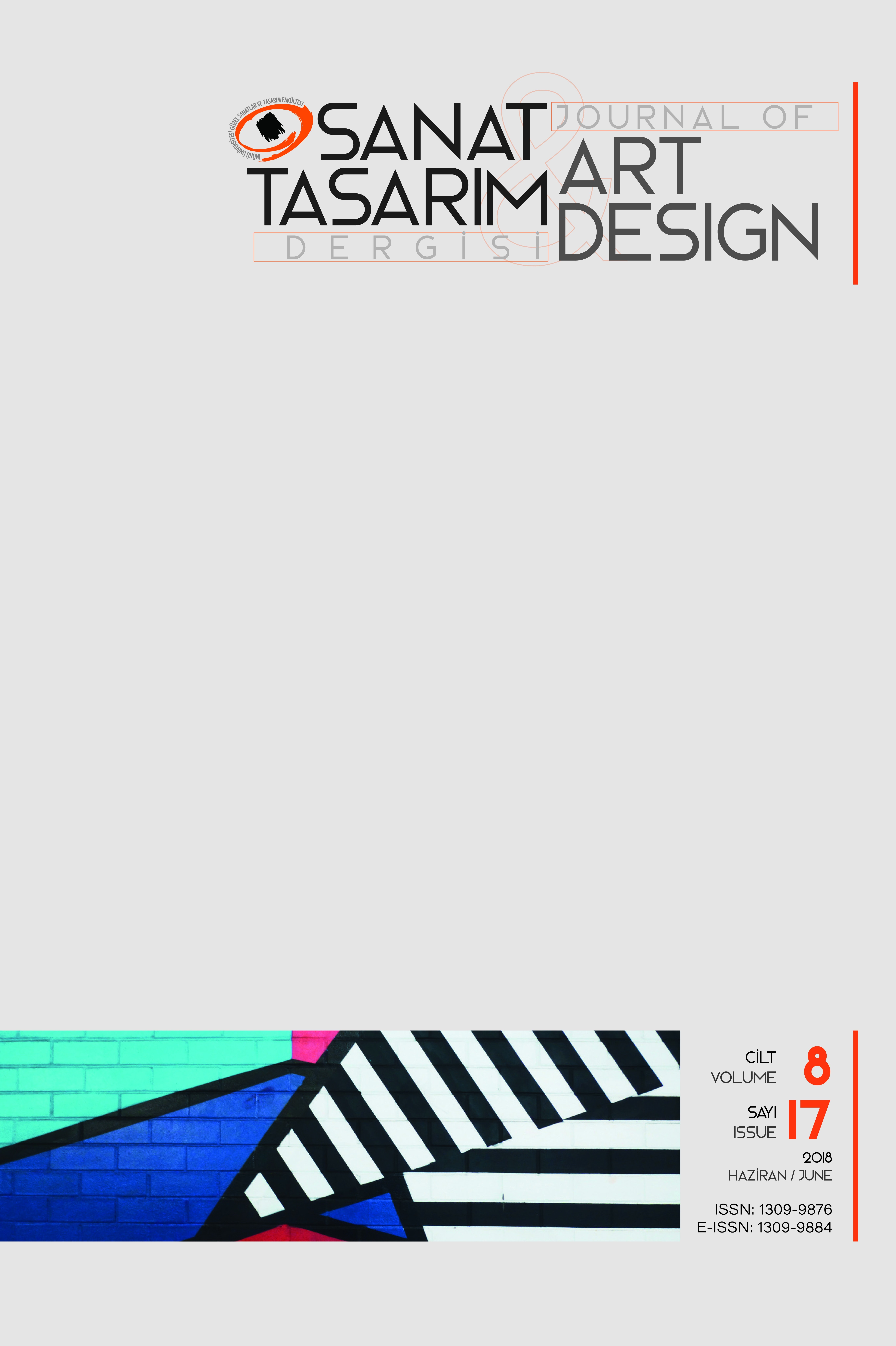“Post Dijital Estetik Bağlamında” İnteraktif Bir Devre Koklama (Circuit Sniffing)
: Circuit Sniffing, Sound Design, Databending, Circuit Bending, Devre Koklama, Devre Bükme, Sonik Sanatlar
“In The Context Of Post Digital Aesthetics” Experiment Of An Interactive Circuit Sniffing
Circuit Sniffing, Sound Design, Databending, Circuit Bending, Sonic Arts,
___
- Andrews, I. (2002). Post Digital Aesthetics and the Return to Modernism, MAP-uts Lecture 1-11.
- Bates, E. (2004) Glitches, Bugs, and Hisses: The Degeneration of Musical Recordings and the Contemporary Musical Work. Bad Music The Music We Love to Hate, Edited by Christopher Washburne and Maiken Derno, Routledge Batur, E. (2015). Modernizmin Serüveni. İstanbul: Sel Yayıncılık.
- Bennett, A., Guerra, P. (2019). DIY Cultures and Underground Music Scenes. London: Routledge. Berdahl, Edgar and Anthony T. Marasco. 2019. “Proposing ‘Computer Bending’ and ‘Circuit Vacuuming’ as Techniques in Experimental Music.” In Proceedings of the International Computer Music Conference, New York University, New York City, New York, USA, vol. 2019.
- Berry, M. D., Dieter, M. (2015). Post Digital Aesthetics: Art, Computation and Design. UK: Palgrave Macmillan Press. Cascone, K. (2000). The Aesthetics of Failure: “Post-Digital” Tendencies in Contemporary Computer Music. Computer Music Journal Winter 2000, Vol. 24, No. 4.
- Carroll, N. (2012), Sanat Felsefesi, ÜtopyaYayınevi
- Collins, N. (2006). Handmade Electronic Music. London: Routledge
- Cox, Christoph. (2006). Invisible Cities: An Interwiev with Christine Kubisch. Cabinet Magazine. Eylül 2006. Erişim Tarihi 20 Şubat 2022, https://www.cabinetmagazine.org/issues/21/cox_kubisch.php Cramer, F. (2014). What Is ‘Post-Digital’?, ARPJA, 3, 11-24.
- Durmaz, S. (2009) Müzik Teknolojisi ve Audio Terimleri Sözlüğü, Cinius Yayınları Fernandez, Alexandre, Marino, Iazetta Fernando (2011), “Circuit- Bending and DIY Culture”, Universidade de Sao Paulo - Brasil
- Fırıncıoğlu, S. (2012), John Cage Seçme Yazılar,: Pan Yayıncılık
- Griffiths, P. (2011), “Batı Müziğinin Kısa Tarihi”, ̇Türkiyė İş Bankası Kültür Yayınları
- Kelly, Caleb (2009) “Cracked Media The Sound of Malfunction”, The MIT Press
- Lechner, M., Zeitz, A., (2020). Inaudible Matters: Electrical Walks Paris (Christina Kubisch), Performances and Lectures at the Gaite Lyrique Paris. Sound Unheard, Issue 1, Volume 2020, 1-7.
- Nies, J. (2013) “The Art of Circuit Bending” E- Musician
- Perez, J. I. G. (2009). ‘DO IT YOURSELF: Cultura y Tecnologia’. In: Revista Icono 14, no13, pp. 278-291, Madrid, Spain.
- Sangild, T. (2004) Glitch The Beauty of Malfunction, The Degeneration of Musical Recordings and the Contemporary Musical Work. Bad Music The Music We Love to Hate, Edited by Christopher Washburne and Maiken Derno, Routledge
- Simon, D., Zeitz, A. (2020). Echos Magnetiques – Christina Kubisch: An Exhibition at the Musee des Beaux-Arts de Rennes. Sound Unheard, Special Issue, 1-15.
- Stuart, C. (2003) Damaged Sound: Glitching and Skipping Compact Discs in the Audio of Yasunao Tone, Nicolas Collins and Oval, MIT Press
- Teboul, E. J., (2021). The Bloomsbury Handbook of Sonic Methodologies. Bull, M., Cobussen, M. (Ed.), Hacking Composition: Dialogues with Musical Machines (s. 807-820). USA: Bloomsbury Academic
- ISSN: 1309-9876
- Başlangıç: 2011
- Yayıncı: İnönü Üniversitesi
Kentsel Yeşil Alanlarda Vandalizm ve Vandalizmi Etkileyen Faktörlerin Belirlenmesi
“Post Dijital Estetik Bağlamında” İnteraktif Bir Devre Koklama (Circuit Sniffing)
Kültürel Perspektiften Diyarbakır Ermeni Müziği
Militer Rejimlerde İletişim Aracı Olarak 20. yy Afiş Sanatı
Kavramsal Sanat Bağlamında Marina Gadonneix’in “İmajdan Sonra” Serisi
Mimarlık Mirası Yapıların İşlevlendirilmesi ve Enerji Verimliliği
Yok Olmuş Bir Yapının Bellekteki Yeri: Trabzon Opera Binası
Zeynep YANILMAZ, Şengül YALÇINKAYA
